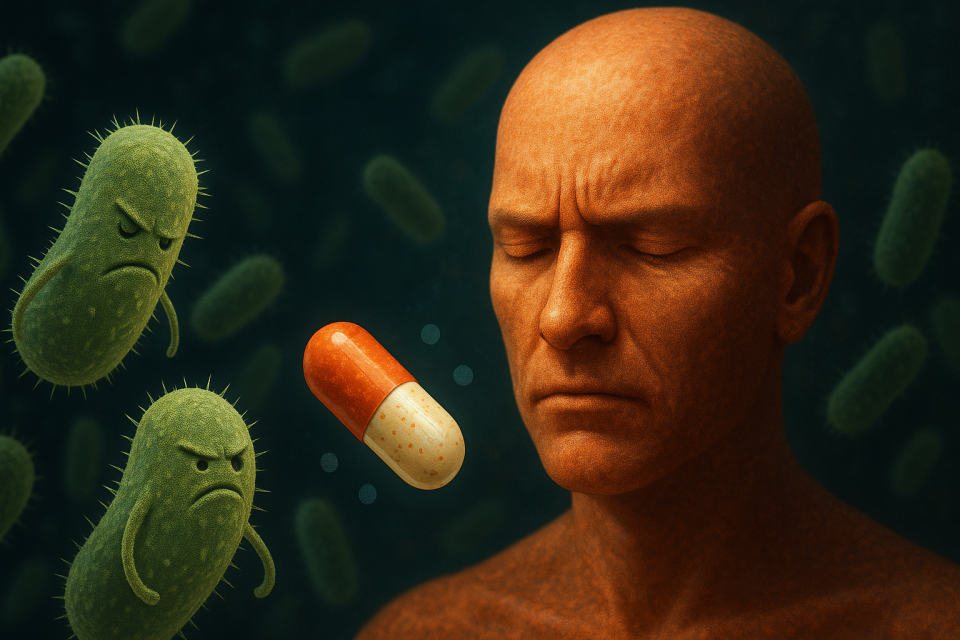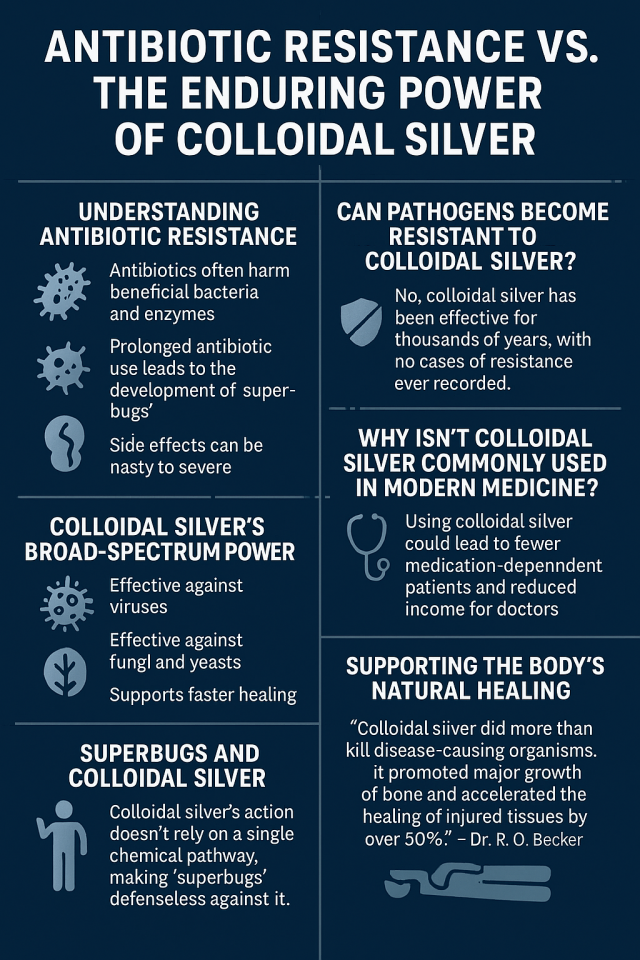Antibiotics, by their very design, work as selective poisons. They target specific bacteria, aiming to kill harmful pathogens while leaving the body unharmed. However, the reality is much messier. Antibiotics often wipe out many beneficial bacteria and enzymes along with the harmful ones, disrupting the delicate balance of the body’s microbiome.
The problem becomes worse when antibiotics fail to kill every pathogen present. The surviving bacteria don’t simply disappear, they adapt. Over time, these surviving strains evolve into “superbugs” that are resistant to the antibiotics that once controlled them. These superbugs can cause infections that are extremely difficult, sometimes impossible, to treat with conventional medicine.
Today, some bacteria have become so resistant that they survive virtually every antibiotic thrown at them. As resistance spreads, patients are left suffering not only from the original infection but also from the harmful side effects of strong medications that are no longer effective.
Can Pathogens Become Resistant to Colloidal Silver?
Unlike antibiotics, colloidal silver has never faced this problem. Despite being used for thousands of years, no single-celled organism has ever developed a resistance to colloidal silver. Scientific testing over decades supports this remarkable observation.
Why is this the case? Colloidal silver works differently from antibiotics. Rather than poisoning a specific enzyme or cellular process, silver ions disrupt multiple life-sustaining functions within microorganisms. They disable the pathogen’s ability to breathe, reproduce, and metabolize nutrients, an attack on multiple fronts that leaves no room for adaptation.
Why Isn’t Colloidal Silver Commonly Used in Modern Medicine?
With such powerful potential, why isn’t colloidal silver a household remedy in modern medicine? The answer may be as much about economics as it is about science. If doctors were to widely recommend colloidal silver, patients might recover so quickly and so thoroughly that they would require fewer medications, fewer office visits, and fewer costly medical procedures. In short, healthy patients are not profitable patients.
The phrase “a patient cured is a customer lost” may seem cynical, but it reflects a harsh reality in a profit-driven healthcare system. Pharmaceuticals that treat symptoms, rather than cure diseases, ensure a steady flow of returning patients. Silver, by contrast, has the potential to disrupt this cycle.
Colloidal Silver’s Broad-Spectrum Power
Colloidal silver doesn’t stop at bacteria. It is known to be effective against:
- Viruses: Antibiotics are useless against viruses, but colloidal silver can inactivate them.
- Fungi and Yeasts: Silver disables fungi as effectively as bacteria.
- Single-celled Parasites: Even some protozoa are vulnerable to silver’s action.
And unlike antibiotics, colloidal silver supports faster healing by stimulating the body’s own regenerative processes.
Superbugs and Colloidal Silver
Much of the fear around “superbugs,” antibiotic-resistant bacteria, could be addressed by colloidal silver. Because silver’s action doesn’t rely on a single chemical pathway, superbugs have no defense against it. Many health advocates believe that if colloidal silver were properly applied in hospitals, deaths from superbugs could drop dramatically.
Supporting the Body’s Natural Healing
Beyond its pathogen-fighting power, colloidal silver has demonstrated remarkable effects in healing tissues. Dr. Robert O. Becker, a respected biomedical researcher, documented these effects in his books The Body Electric and Cross Currents. His clinical trials showed that colloidal silver not only fought infection but also accelerated tissue regeneration.
In one remarkable experiment, Dr. Becker used electrically generated silver ions in elderly patients with deep bone infections, infections that antibiotics failed to cure. By implanting silver electrodes and using the body’s fluids as a conductor, he stimulated tissue repair and infection clearance without toxic side effects. He observed the formation of new cells resembling those of children, rapidly growing, versatile cells capable of rebuilding damaged tissues.
Misunderstandings in Medical Education
Unfortunately, colloidal silver is often misunderstood in modern medical schools. Many doctors are taught that silver is toxic, confusing colloidal silver with harmful silver compounds like silver nitrate, which is indeed poisonous in large doses. This confusion has left colloidal silver relegated to the fringes of mainstream healthcare.
Yet colloidal silver is fundamentally different from industrial silver compounds. Properly prepared colloidal silver consists of microscopic particles of pure silver suspended in water. Unlike chemical silver compounds, colloidal silver is easily absorbed by body tissues without irritation or toxic buildup.
Why Flu Shots When There’s Colloidal Silver?
Flu vaccinations are promoted as the primary defense against influenza, yet they are imperfect solutions that must be reformulated each year as the virus mutates. Some colloidal silver users report that they no longer experience seasonal flu at all. While anecdotal, these accounts raise important questions about whether colloidal silver could serve as a natural defense against many common illnesses.
A Remedy Waiting to Be Recognized
Colloidal silver has withstood the test of time and science. It remains a powerful antimicrobial that pathogens cannot outsmart. Its healing properties go far beyond pathogen control, supporting tissue regeneration and faster recovery.
The resistance of the medical establishment to embrace colloidal silver may stem from economic interests rather than scientific limitations. Still, as awareness grows and patients seek out natural remedies, colloidal silver may reclaim its place as one of the most powerful healing agents ever known to humanity.
References
- Becker, R. O. The Body Electric. 1985.
- Becker, R. O. Cross Currents. 1990.
- Silver Institute. “Silver in Medicine.” (Various reports)
- U.S. Environmental Protection Agency. IRIS Database on Silver Safety.
- Various anecdotal reports from colloidal silver users worldwide.



